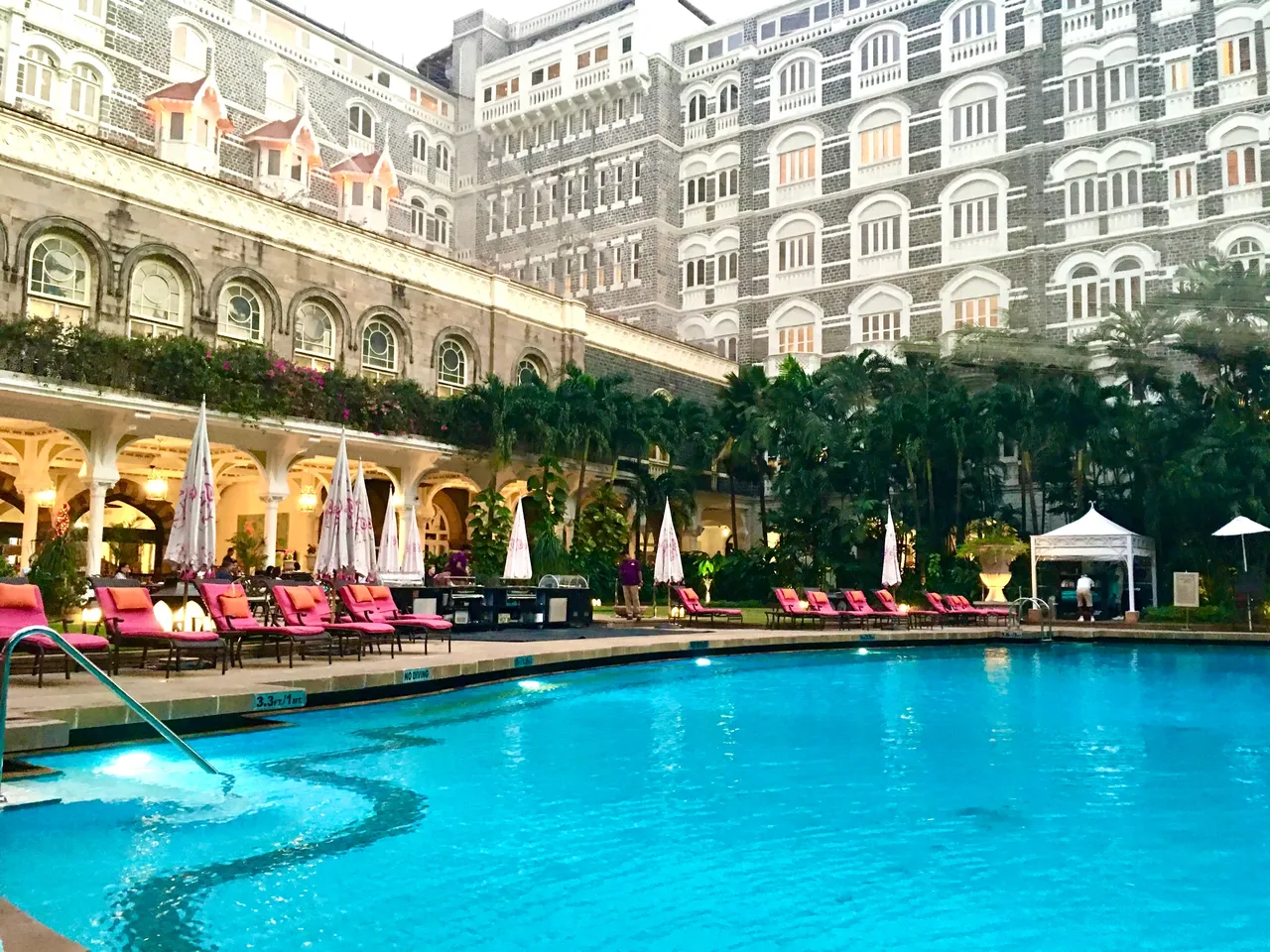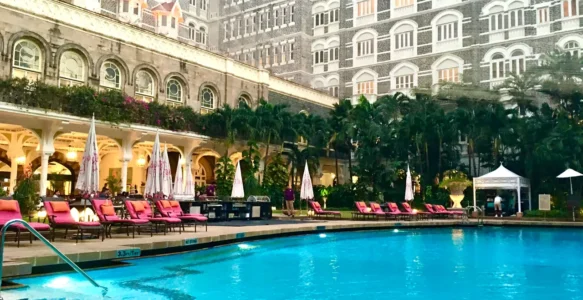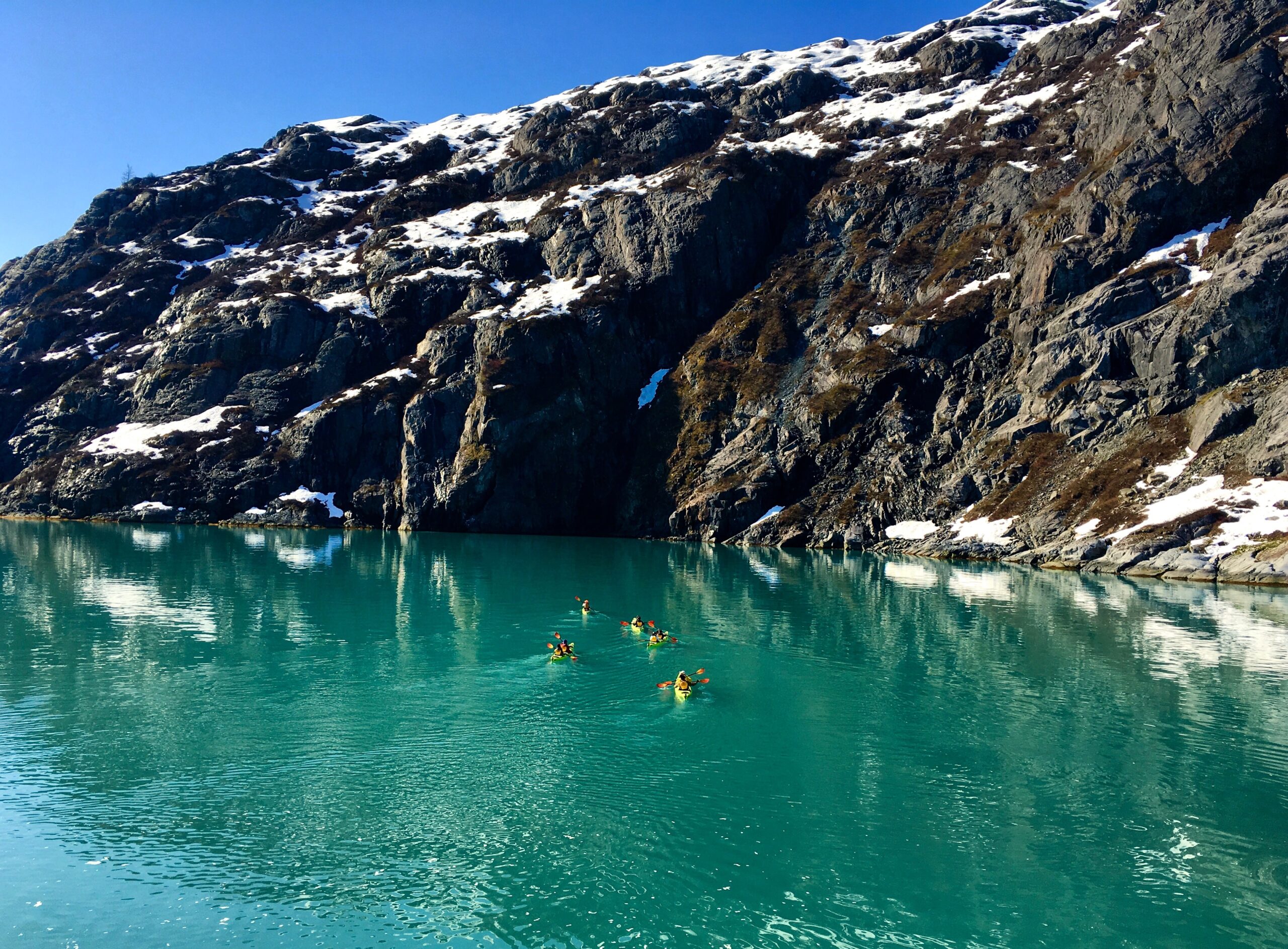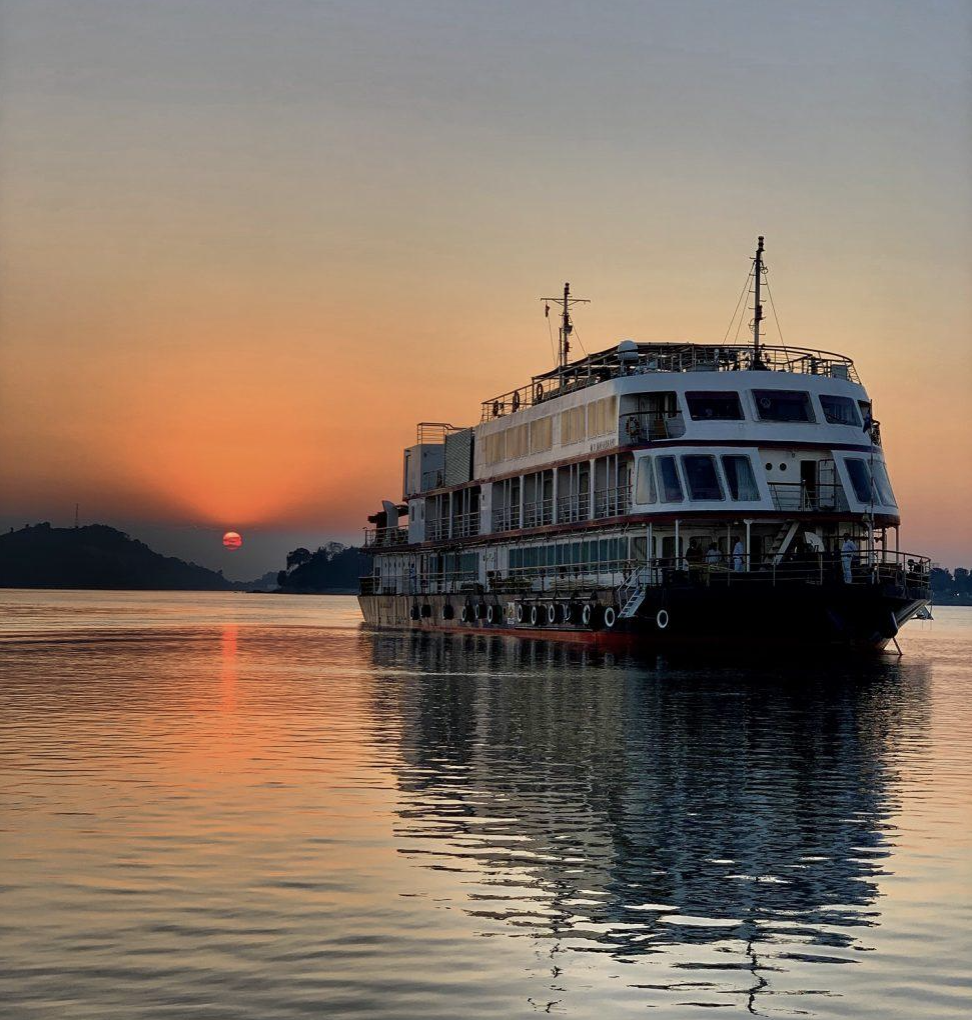Mumbai is the most populous city in India, with over 20 million people, and is home to the country’s financial institutions and the bustling Bollywood film industry. It feels very different from other cities I’ve visited in India, with many corporate hotels and office towers; however, Mumbai has a pulse all of its own with its crowded and colourful streets. If you’re planning on visiting Mumbai, here are 11 of my favourite things to do and see. I would recommend a minimum of 2-3 days to see the highlights that can be enjoyed by taxi, Uber, rickshaw and walking. There are many excellent tour companies and guides you can hire to get the most out of your visit.

1. Gateway of India
Initially built to commemorate the visit of King George V and Queen Mary, the iconic and historically significant Gateway of India monument was where British soldiers last departed India after centuries of colonial rule. At sunrise, the small boats and water in the Arabian Sea glisten behind the monument. Every evening, the Gateway illuminated and drew in crowds of locals, and tourists came to mill around and took photographs of the Gateway and the Taj Mahal Palace on the opposite side of the street.
If you take a sightseeing boat in the Arabian Sea (possibly to Elephanta Island) you will be charmed by the skyline of Mumbai with the Gateway and the Taj Mahal Place in the forefront. Beware of the hundreds of pigeons waiting to be fed by the throngs of residents and tourists.
Tip: Plan your schedule to see the Gateway of India in the morning and again the evening, and when you do make sure your valuables are out of sight and well-secured since it will be very crowded.

2. Mumbai’s Taj Mahal Palace
The iconic Taj Mahal Palace is located in Colaba, one of the oldest neighbourhoods in Mumbai. If it is within your budget to stay in either the old or new wing you will not be disappointed by the palace-like interiors, the architectural beauty and the service in the restaurants and bars. The Old Wing was built in 1903 during British rule and was the first Taj hotel in the world…and the first bar in India. From the hotel there are spectacular daytime and illuminated night views of the Arabian Sea and the Gateway of India. It is located within a short walk to a shopping street, and many restaurants are close by. The National Gallery of Art is just an eight-minute walk from the hotel. You can also walk west from the hotel along the seawall to see old British buildings and local shops.
Photo to be provided by Judi

3. The Dabbawalas of Mumbai
You will not want to miss seeing the Dabbawalas “lunch-box people” delivering over 170,000 hot meals from the worker’s homes outside of the city to their destinations in downtown Mumbai before noon on weekdays. Plan to arrive at the Churchgate Railway Station by 11:30 am and observe from a safe location on the sidewalk as 5,000 Dabbawalas zigzag from the arriving trains with large trays of lunchboxes. They will sort these lunchboxes on the sidewalks before loading them onto bicycles, wagons, and all modes of conveyance. Harvard University produced a case study of the Dabbawalas organisation, which relies entirely on human commitment and employs no automated technology.
Tip: Find a place on the sidewalk safely out of the way of the delivery bicycles and hurried sorting.

4. Dhobi Ghat – Open Air Laundry
Garnering an entry in the Guinness Book of World Records for “the most people hand-washing clothes at a single location,” Dhobi Ghat, Mumbai’s 140-year-old open-air laundromat with rows of concrete wash stalls, each with its own flogging stone, is a must-visit during your trip to Mumbai. It is mind-boggling to see this crowded traditional laundry with the backdrop of modern skyscrapers in the horizon. The best time to go is in the middle of the day to see the washers, called Dhobis, scrub, wash, bleach, hang, iron and sort laundry, much of which has come from hospitals, hotels and spas. Medical laundry has its own area.
Photo to be provided by Judi

5. Dharavi- Largest Slum in Asia
Dharavi, made famous by the movie, “Slum Dog Millionaire,” is the largest slum in Asia with more than a million inhabitants. Guiding through the crowded, narrow alleyways might not be suitable for everyone. However, for curious and intrepid travellers, Dharavi is a must-see.
While I typically don’t recommend “poverty tourism,” I suggest ethical tours that fund community projects and are embraced by the residents and local businesspeople. It provides the opportunity to experience life and commerce within Dharavi while supporting the community.
Tip: Arrange a guide in advance to walk through the narrow alleyways.

6. Mumbai’s Mani Bhavan Gandhi Museum
If you want to learn about Mahatma Gandhi’s life and commitment to Indian freedom through peaceful, non-violent means, you can visit the Mani Bhavan Gandhi Museum. Gandhi once lived in this simple, two-story house which is now a museum, library and research centre. You’ll need about 1 hour to walk through the displays depicting Gandhi’s life and struggles for Indian freedom.

7. Elephanta Caves of Mumbai
Dating from the 5th century CE, the Elephanta Caves are a group of five Hindu and two Buddhist caves. Some of which served as places of worship until the 1500s. It takes about an hour by ferry from the Gateway of India in Mumbai’s Harbour to Elephanta Island. Comfortable walking shoes are a must since there are 693 steps to reach the temple and caves. There is a small train that you can take from the boat to the climbing point. The boat ride there and back is enjoyable and provides the opportunity to appreciate the many activities in the harbour and the panoramic view of Mumbai.
Tip: Buy your tickets at the Mumbai Harbour or in advance if you want to be guided inside the caves.

8. Knesset Eliyahoo Synagogue
Established in 1884, the Knesset Eliyahoo Orthodox Jewish Synagogue is among the city’s oldest. Built by Jacob Elias Sassoon, the grandson of David Sassoon, who was a leader of the Jewish community in Bombay after emigrating from Baghdad. It remains an operating synagogue with a small congregation and services.
Situated in the lively shopping and restaurant Fort area of Mumbai, is the Knesset Eliyahoo Orthodox Jewish Synagogue. Recognizable by its imposing white and blue exterior, it is known as the “Blue Synagogue”. I will never forget the robin’s egg blue sanctuary interior and the impressive Victorian stained glass. Prayer books bearing the names of Baghdadi members can still be found in the old wood shelving.
Tip: Contact the synagogue to make arrangements in advance to enter during non-Sabbath hours. Or, if you are an observant Jew, you can request to participate in services. Entry is subject to permission by the synagogue board, and they may charge a nominal entry fee.
9. Mumbai’s Marine Drive
One of the nicest places to watch the sunset is South Mumbai’s iconic sea-facing promenade. Marine Drive stretches north from Nariman Point to Chowpatty Beach. Whether you are looking for an excellent location for your early morning or evening jog, a spot to unwind overlooking the Arabian Sea or a drive by the water to see the night lights, Marine Drive is the place. When the bright lights come on at night, Marine Drive takes on a different, more carnival-like character, and is commonly referred to as the Queen’s Pearl Necklace. You will also enjoy Marine Drive as you are transferred to and from the airport.

10. Mumbai’s Crawford Market
Mumbai is home to many markets, and the Crawford Market, which opened in 1871. It is one of the most popular to visit because of its magnificent and varied architectural features. There’s almost nothing you cannot find in this giant, colourful bazaar. Open six days a week but closed on Sundays, the chaos of Crawford Market’s wholesale produce area. The stalls filled with toys, figurines, dolls, and every kind of party supply makes for a perfect people-watching experience.
Tip: If you want, you can go beneath the railway overpass right into the laundry area. This is best to do with a guide.
11. Mumbai Street Food Tour
Mumbai has a vibrant street food scene, and if sampling the sweet and savoury snacks is of interest. Booking a Mumbai Street Food Tour is the best way to explore and sample safely.
You can find some of the best street foods off the beaten path in some of the city’s less-visited sites. Some tours start at the Churchgate railway station, where you will walk to Chowpatty Beach for some classic local snacks. Then, you will head into the back alleys of Minara Masjid towards the Muslim enclave of Bhendi Bazaar. This is where you can taste kebabs prepared on street side grills, among other delicacies. If you love sweets, don’t miss the jalebi (deep-fried dough with syrup) and the hand-churned ice cream.
Tip: Sample street foods recommended by your guide. Street food vendors are everywhere catering to the Indians but could cause belly troubles for tourists. Best to eat with your eyes unless instructed it’s safe to do so by your guide!
Now that you know my top 11 things to do in Mumbai consider giving yourself at least 48 hours to experience them all without feeling rushed. You’ll also be distracted by the shopping at every step. I recommend surrendering to your impulses to enjoy the variety of clothing, jewelry, crafts and knickknacks on offer at countless stalls and shops.



